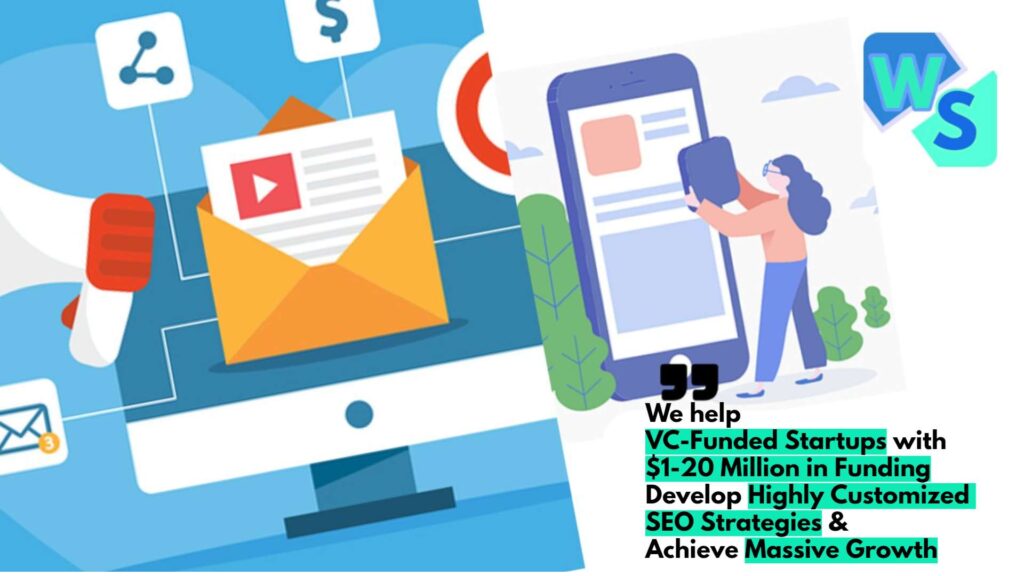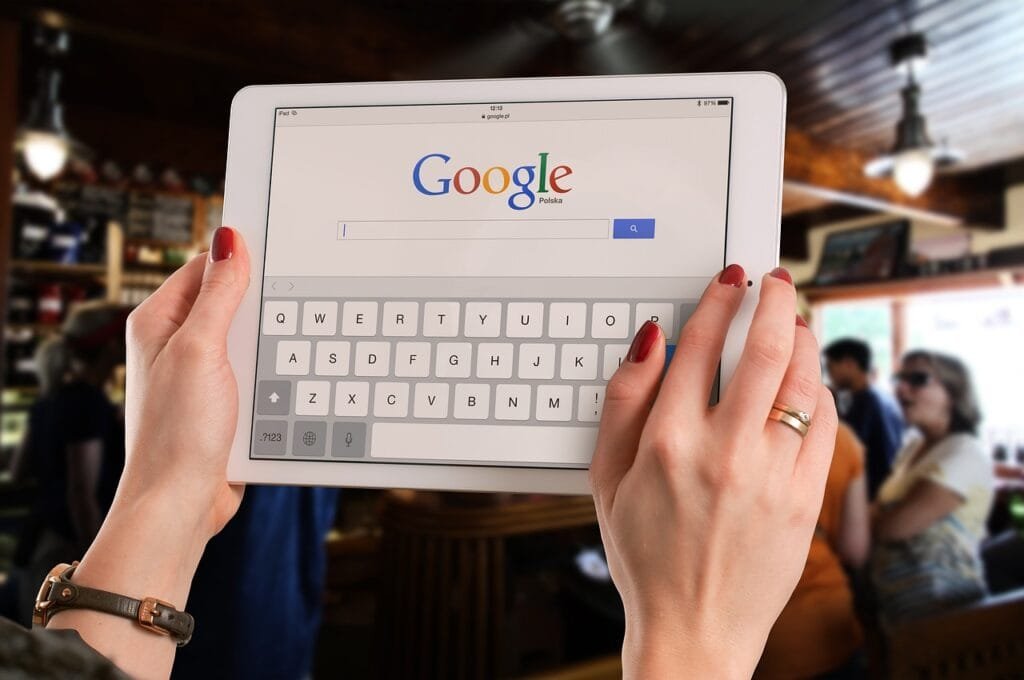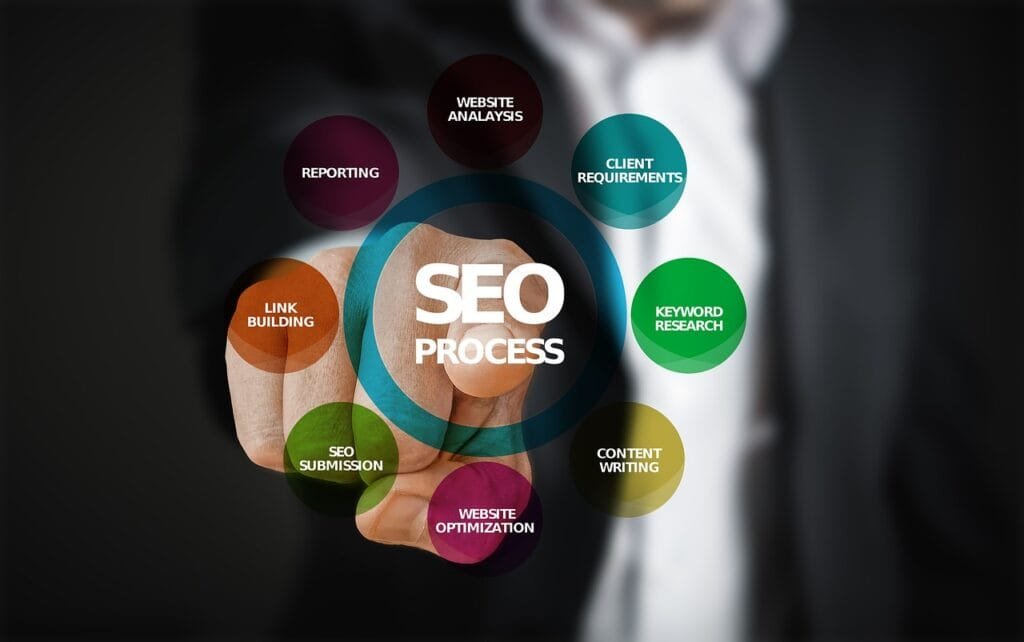The Marketing Mix Basics
Understanding the basics of the marketing mix is essential for anyone looking to navigate growth confidently in the complex world of marketing.
The 4Ps of Marketing
The marketing mix concept, introduced by marketing professor and author E. Jerome McCarthy in 1960 in his book “Basic Marketing: A Managerial Approach,” laid the foundation for modern marketing strategies. McCarthy’s model, also popularized by Neil Borden, includes four crucial elements, commonly referred to as the 4Ps: Product, Price, Place, and Promotion (Investopedia).
Product: This refers to the goods or services offered by a business. Product decisions include aspects like design, features, quality, and branding. For a deeper understanding, visit our article on product in marketing mix.
Price: Price involves the amount of money consumers are willing to pay for a product. Pricing strategies can significantly impact market demand, company profitability, and overall market positioning. For more insights, explore price in marketing mix and marketing mix pricing strategies.
Place: Place, or distribution, refers to the channels through which a product is delivered to its customers. Decisions surrounding place include location, logistics, and supply chain management. Find out more in our place in marketing mix section.
Promotion: Promotion encompasses the various methods used to communicate the benefits and availability of a product to the target market. This includes advertising, sales promotions, public relations, and direct marketing. Visit promotion in marketing mix for a more detailed exploration.
Here’s a quick reference table summarizing the 4Ps:
| 4Ps of Marketing | Key Elements |
|---|---|
| Product | Features, design, quality, branding |
| Price | Pricing strategies, discounts, financing |
| Place | Distribution channels, logistics, locations |
| Promotion | Advertising, sales promotions, public relations |
Evolution of the Marketing Mix
The concept of the marketing mix has evolved significantly since its inception. While the 4Ps framework provided a solid foundation, modern marketing dynamics have led to the inclusion of three additional elements, expanding the mix to the 7Ps (Investopedia). This extended marketing mix addresses the complexities of service-based industries and the importance of customer experience in the current marketplace.
People: This element underscores the importance of employees and customer service in the delivery of products and services. The interactions between staff and clients drive customer satisfaction and loyalty. Delve deeper into the role of people in service delivery in the marketing mix.
Process: Effective service processes can enhance the efficiency and deliver consistent quality, impacting the overall customer experience. This includes everything from how orders are processed to how complaints are handled. Learn more about designing effective service processes.
Physical Evidence: Tangible elements that reinforce the perceived value and quality of a product or service. These can include packaging, store environments, and any physical aspects that customers interact with. Investigate further in our article on physical evidence in branding.
The extended marketing mix introduces more intricate strategic considerations necessary for navigating today’s business landscape and meeting evolving customer expectations.
For those pursuing a thorough understanding, exploring the extended marketing mix and its application can be pivotal in constructing effective marketing strategies that accommodate both traditional and contemporary market demands.
Understanding the Extended Marketing Mix
The extended marketing mix builds upon the traditional 4Ps—Product, Price, Place, and Promotion—to include three additional elements essential for the marketing of services. These elements are People, Processes, and Physical Evidence.
Introduction to Extended Marketing Mix
The concept of the extended marketing mix was developed to address the unique challenges and complexities associated with marketing services, as opposed to physical products. When selling services, it’s critical to consider more than just the initial four elements of the marketing mix. Thus, three more Ps have been added to better cater to the service environment.
| Traditional 4Ps | Extended 7Ps |
|---|---|
| Product | People |
| Price | Processes |
| Place | Physical Evidence |
| Promotion | – |
According to HubSpot, marketers often use the extended marketing mix when their business primarily deals in services. This approach ensures a comprehensive strategy for service delivery and customer satisfaction.
Importance of 7 Ps in Marketing
The seven Ps are critical in creating a robust service marketing strategy. I will elaborate on the significance of each element in the extended marketing mix:
People: This includes everyone involved in the service delivery process—from employees to management. The role of employees in service delivery is crucial, as they directly interact with customers, influencing their perceptions and satisfaction levels. People represent the brand and maintain its image Tutor Chase.
Processes: This involves the procedures, mechanisms, and flow of activities that ultimately deliver the service to the customer. Designing effective service processes increases efficiency and enhances customer experience, making it a key factor in service marketing.
Physical Evidence: This consists of tangible elements that help consumers evaluate the service. It includes the physical environment, packaging, branding, and any other tangible proof of service quality. For instance, well-designed store environments and professional packaging can significantly impact customer perception HubSpot.
By including these three additional elements, the extended marketing mix ensures a more holistic approach, focusing not just on the product but also on the customer service experience. This comprehensive strategy is indispensable for businesses looking to thrive in the service industry.
For further insight into the traditional 4Ps, you can read our detailed explanation on the 4Ps of marketing, and to explore how various models apply these concepts, visit our page on marketing mix models.
Product and Service Strategy
When defining a successful marketing strategy, the product and service strategy is crucial. The extended marketing mix provides a comprehensive framework, allowing businesses to explore various product and service facets, promoting growth and sustainability.
Product Development and Innovation
Product development and innovation lie at the heart of any successful marketing strategy. The continuous evolution of products not only keeps a brand relevant but also caters to the changing needs of customers. For instance, companies like Apple have thrived by consistently innovating their product lines, such as with the iPhone series (Copymate).
Key Aspects of Product Development:
- Market Research:
- Identifying customer needs and market gaps.
- Analyzing competitors.
- Prototyping and Testing:
- Developing product prototypes.
- Conducting beta testing with real users.
- Launch and Evaluation:
- Implementing marketing campaigns.
- Collecting feedback and improving the product.
To understand more about the product’s role in the marketing mix, visit our guide on product in marketing mix.
Service Quality and Differentiation
Quality and differentiation are critical in setting a product or service apart from the competition. High service quality not only wins customer loyalty but also enhances brand reputation. Differentiation, meanwhile, allows a business to carve out a unique niche in a competitive market.
Key Factors in Service Quality:
- Consistency:
- Delivering the same high level of service every time.
- Training employees to uphold service standards.
- Customer Interaction:
- Engaging with customers effectively.
- Solving customer problems promptly.
- Feedback Mechanisms:
- Gathering customer feedback.
- Making necessary improvements.
Key Factors in Differentiation:
- Unique Selling Proposition (USP):
- Defining what makes the product or service unique.
- Communicating the USP clearly to the target audience.
- Branding:
- Creating a strong brand identity.
- Using consistent branding across channels.
- Innovation:
- Regularly introducing new features.
- Staying ahead of market trends.
For more insights on creating a strategic marketing mix, explore our article on strategic marketing mix.
Comparison Table for Product and Service Attributes
| Attribute | Importance | Description |
|---|---|---|
| Product Development | High | Essential for addressing market needs and gaps. |
| Quality | Critical | Key for customer satisfaction and loyalty. |
| Differentiation | Vital | Ensures a competitive edge in the market. |
Embracing the elements of the extended marketing mix, like people, processes, and physical evidence, complements a robust product and service strategy. For those exploring the extended elements, our articles on the importance of marketing mix and the marketing mix models can provide further guidance.
Pricing Strategies
In the realm of marketing, setting effective pricing strategies is pivotal for business growth. Price is a key component of the extended marketing mix and plays a crucial role in determining a product’s market position.
Setting Pricing Objectives
When setting pricing objectives, it’s important to define what you want to achieve through your pricing strategy. Objectives can range from maximizing profit, capturing market share, to achieving product quality perception.
| Pricing Objective | Description |
|---|---|
| Profit Maximization | Setting prices to achieve the highest possible profit. |
| Market Share | Pricing to increase a company’s share of the market. |
| Survival | Setting prices to ensure the business can stay afloat in a competitive market. |
| Product Quality Leadership | Pricing higher to establish a product as a premium option. |
Pricing objectives need to align with overall business goals and consider factors like market conditions, competition, and target audience preferences. For a deeper dive into how pricing ties into marketing, explore our article on the price in marketing mix.
Pricing Methods and Approaches
There are several methodologies businesses can adopt when setting prices. Below are some common approaches:
- Cost-Plus Pricing: Adding a fixed margin to the production cost to determine the selling price.
- Value-Based Pricing: Setting the price based on the perceived value to the customer rather than on the cost of production.
- Competitive Pricing: Setting prices based on what competitors are charging.
- Penetration Pricing: Setting a low price to enter a competitive market and raise prices later.
- Skimming Pricing: Setting a high initial price and then gradually lowering it to attract different customer segments.
| Pricing Method | Approach | When to Use |
|---|---|---|
| Cost-Plus Pricing | Cost + margin | Simple to calculate; when costs are predictable. |
| Value-Based Pricing | Customer perceived value | High-value unique products. |
| Competitive Pricing | Set relative to competitors | Highly competitive markets. |
| Penetration Pricing | Low initial price | When entering a new market; to quickly gain market share. |
| Skimming Pricing | High initial price | New, innovative products; to maximize early profit. |
Each method has its own set of advantages and challenges. The choice of method depends on factors like product type, market dynamics, and the overarching pricing objectives set by your business.
For more sophisticated pricing strategies, consider blending various approaches to find what works best for your specific situation. For further reading, our article on marketing mix pricing strategies provides an in-depth analysis.
Understanding how to set pricing objectives and the methods to achieve them is fundamental to any business aiming for growth within the strategic marketing mix. By employing the right strategies, businesses can ensure they meet their revenue goals while maintaining a competitive edge in the market.
Placement and Distribution Channels
Having a robust placement and distribution strategy is essential for achieving broad market reach and maximizing product visibility. By understanding the intricacies of place in the marketing mix, CEOs, CMOs, Founders, and business owners can effectively distribute their products through optimal channels.
Channel Selection and Management
Selecting the right distribution channels is crucial for ensuring that your products reach the target audience effectively. This involves choosing a mix of both physical stores and online platforms to increase visibility and accessibility. According to Investopedia, placing products in the right stores and utilizing effective advertising strategies can significantly enhance market penetration.
Key considerations for channel selection include:
- Market Reach: Ensuring the product is available in locations frequented by the target audience.
- Cost Efficiency: Balancing the cost of distribution against potential sales revenue.
- Control: Maintaining control over the distribution process to ensure quality and consistency.
- Customer Experience: Providing a seamless purchasing experience, whether online or offline.
Effective channel management requires regular monitoring and analysis to ensure optimal performance. Business owners should be prepared to adjust their strategies based on market feedback and changing consumer behavior. For a deeper dive, explore our article on marketing mix distribution channels.
Online vs. Offline Distribution
In today’s digital age, a hybrid approach that leverages both online and offline distribution channels often yields the best results. Each channel has its own advantages and challenges, which must be understood to create a balanced distribution strategy.
Online Distribution
Online distribution channels include e-commerce websites, online marketplaces, and social media platforms. The primary benefits of online distribution include:
- Wider Reach: Ability to reach a global audience.
- Lower Overhead Costs: Reduced need for physical retail space.
- Data-Driven Insights: Access to customer data and analytics for better decision-making.
However, online distribution also presents challenges such as increased competition and the need for robust digital marketing strategies. For effective online distribution, consider reading our guide on digital marketing mix.
Offline Distribution
Offline distribution channels involve physical retail stores, warehouse clubs, and specialty shops. Advantages of offline distribution include:
- Tangible Customer Experience: Opportunities for customers to physically interact with the product.
- Brand Presence: Establishing a strong retail presence can enhance brand credibility.
- Immediate Gratification: Customers can take immediate possession of the product.
Challenges with offline distribution include higher overhead costs and the need for efficient inventory management. Learn more about traditional distribution methods in our traditional marketing mix section.
To illustrate the differences, consider this comparative table:
| Distribution Channel | Advantages | Challenges |
|---|---|---|
| Online | Wider Reach, Lower Overhead, Data Insights | Increased Competition, Requires Robust Digital Marketing |
| Offline | Tangible Experience, Brand Presence, Immediate Gratification | Higher Overhead, Inventory Management |
In summary, understanding and effectively managing your placement and distribution channels can greatly enhance the success of your extended marketing mix. Whether choosing online, offline, or a combination of both, the key is to create a balanced strategy that aligns with your business goals. For more insights on marketing strategies, visit our article on marketing mix strategies.
Promotional Techniques
Understanding and effectively utilizing promotional techniques is vital for communicating the value of your products or services to your target audience. This section addresses both the components of the promotional mix and the importance of integrated marketing communications in the extended marketing mix framework.
Promotional Mix Components
The promotional mix consists of various tools and techniques businesses use to achieve their promotional objectives. Here are the main components:
- Advertising: Utilizing different media to broadcast product benefits and features.
- Public Relations (PR): Managing the public image and communications to build a favorable reputation.
- Sales Promotions: Short-term incentives to drive immediate sales.
- Personal Selling: Direct interaction between a sales representative and a potential client.
- Direct Marketing: Personalized marketing techniques like email or SMS marketing.
- Digital Marketing: Online strategies including social media marketing, content marketing, and digital advertisements.
Effective promotion aligns with brand identity and budget (Copymate). Each of these components works together to communicate value and create consumer demand:
| Promotional Tool | Description |
|---|---|
| Advertising | Media ads on TV, radio, print, online |
| PR | Press releases, media outreach, community events |
| Sales Promotions | Coupons, discounts, contests |
| Personal Selling | One-on-one sales meetings, calls |
| Direct Marketing | Emails, mailers, telemarketing |
| Digital Marketing | Social media, content marketing, PPC ads |
Integrated Marketing Communications
Integrated Marketing Communications (IMC) ensures that all promotional activities are unified and consistent. IMC involves coordinating various promotional tools to deliver a clear, consistent, and compelling message about the organization and its products.
Components of IMC:
- Consistent Messaging: All elements of the promotional mix should deliver a uniform message that reinforces the brand’s positioning.
- Multichannel Approach: Utilize multiple channels (online and offline) for broader reach and engagement.
- Synergy: The combined impact of all promotional tools should be greater than their individual effects.
Apple is an exemplar of effective IMC, integrating product innovation, strategic placements, and a powerful promotional campaign focusing on design and user experience (Investopedia). For more insights on how companies like Apple utilize the marketing mix, visit our article on 4ps of marketing.
For more detailed guidance on developing and enhancing your promotional strategies, explore our comprehensive articles on integrated marketing mix and digital marketing mix.
By aligning your promotional techniques with the broader aspects of the extended marketing mix, you can effectively reach your target audience, build brand loyalty, and drive business growth. It’s crucial to evaluate and adjust your strategies regularly to stay competitive in the evolving marketplace.
People in Marketing
In the context of the extended marketing mix, “People” plays a pivotal role in delivering quality service and interacting with customers. This P focuses on employees who directly represent the company’s brand and ensure that customer needs are met.
Role of Employees in Service Delivery
Employees are key players in the extended marketing mix, particularly in service-driven industries. They are the face of the company, responsible for ensuring customer satisfaction and delivering the service as promised. Their performance can directly impact the perceived quality of service, as well as the overall brand reputation.
Factors such as employee training, motivation, and behavior are crucial in service delivery. Well-trained employees can provide superior service, resolve issues effectively, and create a positive experience for customers. According to Tutor Chase, employees play a crucial role in the implementation of the extended marketing mix, which includes the additional Ps like People, Process, and Physical Evidence.
To achieve exceptional service delivery, consider the following strategies:
- Invest in comprehensive employee training programs
- Foster a positive work environment to motivate staff
- Encourage employees to provide personalized service
Importance of Customer Interactions
Customer interactions are at the heart of the extended marketing mix. Every interaction between an employee and a customer can influence the customer’s perception of the brand. Positive interactions can lead to repeat business, positive reviews, and word-of-mouth referrals. Negative interactions, on the other hand, can harm the brand’s reputation and result in lost customers.
Employing strategies to enhance customer interactions is crucial. This includes actively listening to customer feedback, addressing concerns promptly, and ensuring that employees have the resources they need to address customer needs effectively.
For more detailed strategies on maximizing customer interactions, check out our article on service marketing mix.
To track the efficacy of these strategies, consider using customer satisfaction surveys and other feedback mechanisms. Here’s a simple example of how satisfaction scores might look:
| Customer Interaction Aspect | Satisfaction Score (out of 10) |
|---|---|
| Friendliness of Staff | 8.5 |
| Knowledgeability of Staff | 9.0 |
| Responsiveness of Service | 8.8 |
| Problem Resolution | 8.2 |
| Overall Experience | 8.7 |
By focusing on the role of employees and the importance of customer interactions, you can enhance the overall effectiveness of your extended marketing mix, leading to higher customer satisfaction and better business outcomes.
For more insights into different aspects of the marketing mix, visit our sections on 4Ps of marketing, marketing mix strategies, and marketing mix components.
Processes and Efficiency
In the context of the extended marketing mix, “Process” is a crucial component that encompasses the systems and procedures used to deliver services. A well-designed process can improve the customer experience, increase operational efficiency, and reduce costs (Tutor Chase).
Designing Effective Service Processes
Designing processes that are efficient and effective is essential for any business aiming for growth. Here are some key steps:
- Mapping Out Customer Journeys: Understanding each step a customer takes from initial contact with the brand to the final purchase and post-purchase interaction.
- Streamlining Procedures: Identifying and eliminating bottlenecks to ensure smooth and efficient service delivery.
- Implementing Technology: Leveraging software and automation tools to expedite and enhance the service process.
- Training Employees: Ensuring staff are well-trained to follow procedures correctly and handle deviations smoothly.
| Key Steps | Importance |
|---|---|
| Mapping Out Customer Journeys | Identifies pain points and opportunities for improvement |
| Streamlining Procedures | Reduces wait times and improves service efficiency |
| Implementing Technology | Enhances speed and reliability of service delivery |
| Training Employees | Ensures consistency and quality in service |
For a more detailed breakdown of the marketing mix, visit marketing mix components.
Enhancing Customer Experience
Enhancing the customer experience involves seamlessly integrating processes into your marketing strategy. Here are some strategies:
- Personalization: Tailoring services to meet individual customer needs.
- Feedback Mechanisms: Regularly collecting and analyzing customer feedback to make informed improvements.
- Consistency in Quality: Ensuring that the quality of service remains high across all touchpoints.
- Efficient Issue Resolution: Quickly addressing customer complaints and issues to turn negative experiences into positive ones.
Improving the customer experience by integrating these strategies into the extended marketing mix can lead to higher customer satisfaction and loyalty (LinkedIn).
For more insights on how processes fit into the larger framework of marketing strategies, check out our sections on strategic marketing mix and marketing mix models.
By understanding and optimizing the process aspects of the extended marketing mix, businesses position themselves to deliver superior service and achieve sustainable growth.
Physical Evidence and Branding
Physical evidence is a critical component in the extended marketing mix, especially in the service industry. It involves tangible aspects that influence customer perceptions.
Tangible Elements Impacting Perception
Tangible elements play a crucial role in shaping how customers perceive a business. These elements include the physical environment where the service is delivered, as well as any products or materials provided to customers. Examples can range from the cleanliness of a store to the professionalism of printed materials. Physical evidence can enhance brand image and help differentiate a business from competitors.
Important Tangible Elements to Consider:
- Store Ambiance: Lighting, decor, and furniture.
- Staff Appearance: Uniforms and professionalism.
- Printed Materials: Business cards, brochures, and menus.
- Digital Presence: Website design, online customer service interface.
For businesses, focusing on these visible aspects can lead to improved customer satisfaction and loyalty. For instance, a clean and well-organized store environment can enhance the shopping experience and encourage repeat visits, as discussed in our article on physical evidence and branding.
Packaging and Store Environments
Packaging and store environments significantly impact customer experiences and branding. Effective packaging not only protects the product but also communicates brand values and attracts customers. It serves as a silent marketer on the retail shelf, providing critical information and driving purchase decisions.
Considerations for Packaging:
- Design: Visual appeal and brand consistency.
- Functionality: Ease of use and practicality.
- Sustainability: Eco-friendly materials and practices.
For store environments, the layout, lighting, and overall ambiance contribute to the perception of the brand. A well-designed store can make shopping more enjoyable, influencing customers to spend more time and money.
| Aspect | Description |
|---|---|
| Design | Visual appeal, attractiveness |
| Functionality | Ease of use, protective quality |
| Sustainability | Eco-friendliness |
By paying attention to these factors, businesses can create a stronger emotional connection with their customers, as detailed in our article on marketing mix strategies.
Integrating physical evidence effectively within the extended marketing mix provides a competitive edge. It can significantly affect how customers perceive and interact with a brand, ultimately impacting their overall satisfaction and loyalty. For more insights on creating an effective strategy, check out our comprehensive guide on strategic marketing mix.




















